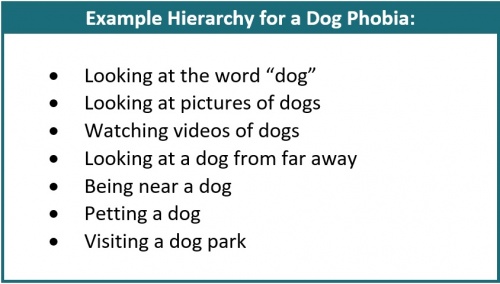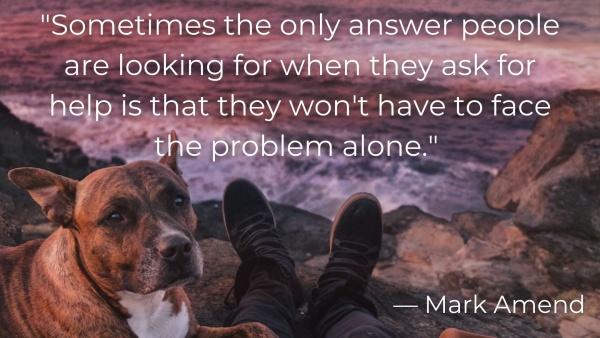You may have heard that Exposure and Response Prevention (or ERP) is the front-line treatment for OCD and other anxiety disorders. In other words, ERP really can help anxiety! But what is ERP and how does it work?
Table of Contents
What is Exposure and Response Prevention?
In a nutshell, Exposure and Response Prevention is slowly and gradually facing your fears to help yourself stop feeling afraid of them. That is, exposing yourself to your anxiety triggers and then preventing your typical response of trying to avoid your anxiety in some way. And yes, this means that you intentionally make yourself feel anxious!
This may sound completely backwards, but intentionally confronting the things that make you feel anxious can be an effective strategy to overcome your anxiety. (See my other article on the cycle of anxiety for a further explanation of this.)
| Exposure: intentionally facing a feared object, task, place, etc. Response Prevention: intentionally not avoiding or doing anything to minimize your anxiety or make it “go away.” |
How does ERP work?
Usually, when you have anxiety or OCD, you are very much aware that your fears are irrational or extreme. However, this does not help you much when you are in the situation. And unfortunately, it’s impossible to logic your way out of anxiety, since your logic brain tends to take a back seat when you go into survival mode (i.e. the “fight or flight response”). The survival part of our brain can learn from experiences, however, and that’s where ERP comes in.

What Does Exposure and Response Prevention Look Like?
First, an ERP therapist can help you identify what your anxiety triggers are and what the related thoughts or actions are that might be keeping your anxiety going.
| Example: Let’s say that “Katie” fears that if she were to pick up a knife to cut up vegetables, then she may hurt her daughter with the knife instead. When she responds to this fear by avoiding the trigger or engaging in a compulsion, this reinforces her fear. Katei may ask her spouse to cut up the vegetables instead of her, or she may compulsively pray that she doesn’t hurt her daughter. While Katie may get some immediate relief from her choice to pray or avoid cutting up the vegetables herself, this avoidance will only make it even harder for her to face her fears the next time. |
Next, your therapist can help you create a list of your triggers from least to most distressing (called a hierarchy). You can then work together to use this list to help you face your fears gradually in a way that feels manageable, rather than overwhelming.
Starting with your least distressing triggers, you will face each item on the list without avoiding or engaging in any compulsions or safety behaviors. This helps your brain realize that your triggers are not actually dangerous once the feared outcome doesn’t actually happen. Most exposures will take repeated practice before they become significantly easier.
Here are some examples of possible hierarchies:


Types of Exposures
There are different types of exposures that may be helpful, depending on the situation. These may include.
- Imaginal exposures: Exposures to words, images, videos, or ideas.
- Exposure scripts: For situations that are difficult, impossible, or unethical to face in real life, you may use exposure scripts. An exposure script is a type of imaginal exposure that involves writing out the feared scenario and then either reading the scenario or listening to a recording of the scenario.
- In vivo exposures: Exposures to real-life scenarios, such as actually touching an object.
- Community exposures: A type of in vivo exposure that takes place outside of your home or the therapy office, such as visiting a theme park.
What happens in a typical ERP session?
A typical ERP therapy session will usually include the following:
- Reviewing Homework: Checking in on your homework progress, including exposure and response prevention that was practiced outside of therapy.
- Acknowledging Progress: Discussing accomplishments since the last session (this is a very important step as working through anxiety can be really hard!).
- Anything New: Discussing any new triggers or safety behaviors/compulsions that you noticed since the last therapy session and possibly incorporating these into your hierarchy.
- Problem-solving: discussing what to do about any exposures that did not go as planned.
- Practicing ERP: doing exposures in-session with your therapist.
- Homework: Discussing what would be helpful to work on until the next session (especially exposures).
What are the Goals of ERP?
While the specific goals will look different for each individual, the underlying goal of ERP is for you to be able to tolerate the uncertainty around your fears and begin living your life the way that you would like to, rather than making decisions based on your anxiety. This means that when an anxiety trigger comes up, you can sit with the “maybes” related to your trigger and then make a choice to not engage in any compulsions or safety behaviors.
What should you look for in an ERP therapist?
The most important factor when choosing a therapist for any reason is that you feel that this person is a good fit for you. Therapists are people just like everyone else, and if you and your therapist don’t feel like a good match, then it doesn’t matter what kind of expertise they may have.
When looking for a therapist who specifically treats anxiety or OCD, it’s important to ask if they are knowledgeable in ERP. The International OCD Foundation (IOCDF) offers numerous resources on their website, including a directory of therapists who treat anxiety and OCD that you can filter by zip code.

How is ERP different from traditional talk therapy?
ERP is much more focused on actions and how you can do things differently that eventually help you to feel better. Rather than talking extensively about how things got the way they are, you are encouraged to focus on doing things differently to help you reach your goals.
In many ways, ERP is much more challenging that traditional talk therapy. You are asked to face your greatest fears and temporarily increase your discomfort on purpose in order to work through your anxiety and get to the point where it no longer controls you. The clients that I have worked with who have been willing to engage in ERP and face their greatest fears are some of the bravest people that I know.
As a reminder, this blog post is not intended as professional counseling or clinical advice. This article is meant to provide individuals with a better understanding of exposure and response prevention as a treatment for anxiety. I encourage you to consider seeking help in person if you need additional support or are feeling overwhelmed by your anxiety or OCD.

-Kristel Roper, LMFT, LPCC
Kristel Roper is a licensed psychotherapist offering therapy services to individuals in the Sacramento area. She specializes in anxiety counseling and especially enjoys working with young adults as they navigate the challenges of college, career, and beyond. Learn more about Kristel Roper’s Therapy Services.
Photo by Denys Nevozhai on Unsplash
Photo by Leio McLaren on Unsplash

Thanks for sharing superb informations. Your site is so cool. I am impressed by the details that you?¦ve on this website. It reveals how nicely you perceive this subject. Bookmarked this web page, will come back for more articles. You, my pal, ROCK! I found simply the information I already searched all over the place and simply could not come across. What an ideal site.
Itís difficult to find well-informed people in this particular topic, but you seem like you know what youíre talking about! Thanks